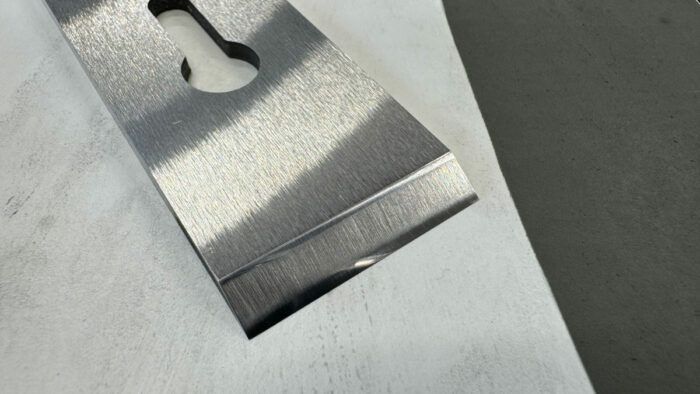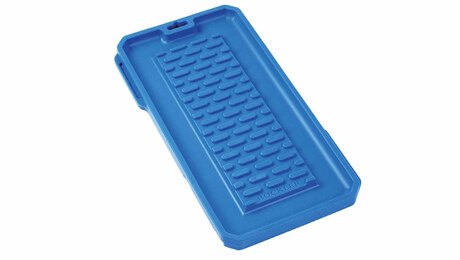Grit vs. Microns
When discussing sharpening stones, Vic Tesolin thinks it's about time we start talking about microns.
When it comes to sharpening terminology, it can feel like a secret language. You’ll often hear folks talk about “grit,” but rarely do you hear anyone mention “microns.” There’s a good reason behind this, and it’s mostly about tradition and ease of use.
Grit is essentially a way to measure how coarse or fine the abrasive particles in a sharpening stone are. The higher the grit number, the smaller or finer the particles. For example, a 400-grit stone is excellent for grinding away lots of material quickly, while an 8000-grit stone is perfect for getting that super-sharp, polished edge that can slice through wood like butter.
This system has been around for a long time and has become the go-to method for many industries, including woodworking, metalworking, and culinary arts. It’s easy to understand: the bigger the number, the finer the finish.
Microns, on the other hand, are a unit of length from the metric system, one-millionth of a meter, to be precise. When used for abrasives, microns describe the actual size of the particles. So a 30-micron particle is way bigger than a 3-micron one. Instead of using a 1000-, 4000-, and 8000-grit stone, you may use a 15-, 5-, and 1-micron stone.
The grit system has become a standard because it’s tried and true. Industries have developed and refined it over the years, and it works (sort of). The tradition continues because it’s a quick and easy way for users to understand what kind of edge they’ll get with a particular stone. To my mind, a bigger number equaling coarser grit makes more sense than a bigger number signifying a smaller grit.
However, different countries or parts of the world have various systems to measure grit size, which can make things confusing. Different companies also use other systems of measurement for their stones. I once used a 4000-grit stone that gave me a finer polish than my 8000-grit! The only accurate way to know what you’re getting is to know the particle size in microns.
There are many charts that will help translate from grit to microns so that you can at least be in the ballpark. Reputable companies will also offer the particle size of their abrasives; however, it may require an email to track it down.
Grit size is only one factor when discussing how an abrasive will work when sharpening. There are other factors, but particle size is chief among them. There are hundreds of sharpening stones and abrasives out there, and it can seem daunting to suss out which ones to get. At least if you work with microns, you will know that you are comparing apples to apples as you wade through the sea of products.
In order to understand, you must do. —Vic Tesolin
Fine Woodworking Recommended Products

Rockler Silicone Sharpening Stone Tray

Wen Diamond Grinding Wheel

Honing Compound


























Comments
Makes absolute sense, Vic. Just like the metric system is light years more practical and useable than the imperial system (which is based on such "standards" as the distance an ox can plow without a rest, for example).
I recall when the US tried to adopt the metric system about 50 years ago and it flopped. Not a chance in hell you could ever get your eminently practical suggestion adopted in the US. It makes too much sense.
I find that the hardness of the particles & the strength of the particle binding are also strong factors. I wish there were some form of uniform scale which could inform the user of both the time required to grind, along with the quality of the surface left.
Log in or create an account to post a comment.
Sign up Log in